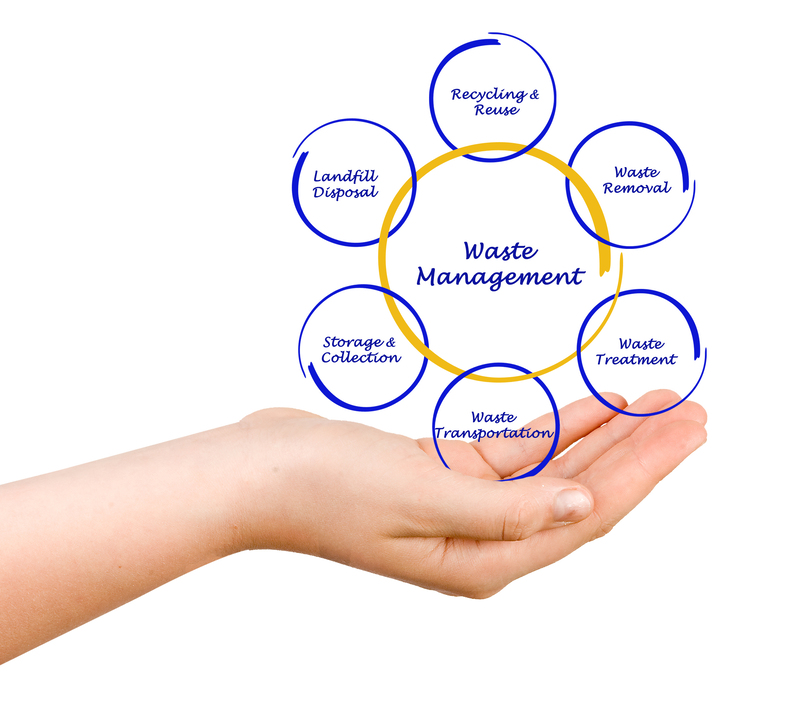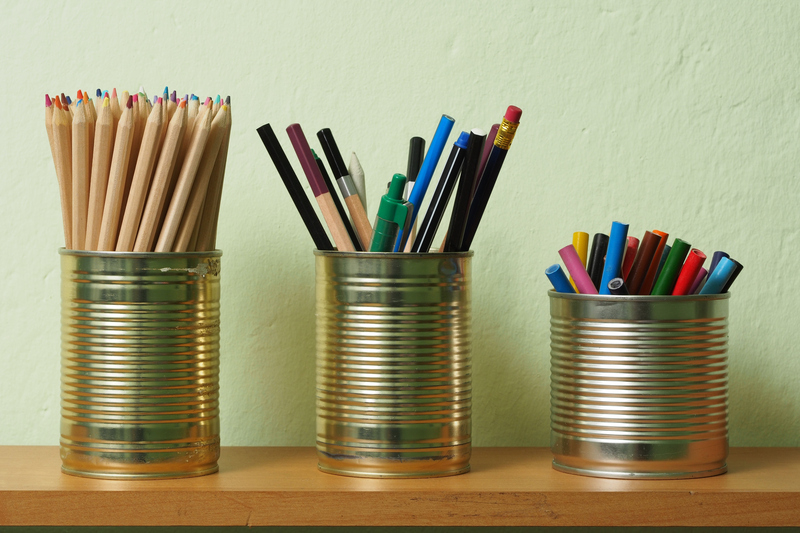How to Minimize Pollution by Disposing of PPE the Right Way
The surge in use of personal protective equipment (PPE) has played an essential role in public health, particularly during the global pandemic. However, improper disposal of PPE has led to increased pollution, significantly impacting our environment. To preserve our planet's health and keep our communities clean, understanding how to minimize pollution by disposing of PPE the right way is crucial.

Understanding PPE Pollution: A Growing Environmental Concern
PPE includes face masks, gloves, face shields, and gowns--all vital for protecting individuals from infectious agents. However, with billions of single-use PPE items consumed worldwide, incorrect disposal is now a leading cause of pollution in urban spaces, rivers, and oceans.
- PPE litter harms marine life by trapping or being ingested by animals.
- Non-biodegradable materials such as polypropylene (used in masks and gowns) do not break down easily, leading to long-term ecological damage.
- Chemical leaching and microplastics from degrading PPE seep into soil and waterways, affecting ecosystems and potentially human health.
Why Proper PPE Waste Disposal Matters
The impact of PPE-related pollution extends beyond environmental aesthetics. Improper disposal can:
- Transmit infectious diseases to waste handlers and the community.
- Block drainage systems, leading to local flooding.
- Increase costs for local governments responsible for cleanup efforts.
- Contribute to the growing crisis of plastic pollution in oceans and landfill sites.
Implementing recommended practices for PPE disposal not only protects the environment but also public health and municipal resources.
The Types of PPE and Their Environmental Impact
Face Masks
Standard surgical masks and N95 respirators are made of multiple layers of plastic fibers. When littered or discarded irresponsibly, they fragment into microplastics, polluting water bodies and lands for decades.
Gloves
Nitrile, latex, and vinyl gloves are broadly used but often become litter after a single use. They are not easily recyclable due to contamination and material composition.
Face Shields & Gowns
Composed of plastics like PET or PVC, these items pose similar risks if not disposed of correctly.
Best Practices: How to Minimize Pollution from PPE Waste
1. Follow Local PPE Disposal Guidelines
The most crucial step to minimize PPE pollution is adhering to your community's specific waste management recommendations. Most localities advise disposing of used PPE in designated bins marked 'hazardous' or 'biohazard' waste. This prevents PPE from ending up in public areas or polluting natural habitats.
- Never litter masks, gloves, or shields in public spaces.
- Double-bag contaminated PPE before putting it in the trash.
- Use sealed bins to prevent animals and wind from scattering the waste.
2. Don't Recycle Used PPE in Household Bins
While recycling helps reduce pollution, used PPE should not be placed in household recycling because:
- Contamination poses risks for recycling facility workers.
- PPE typically contains mixed materials that are not compatible with standard recycling infrastructure.
3. Explore Specialized PPE Recycling Programs
Some companies and municipalities have begun offering specialized PPE recycling solutions. Look for drop-off points at local pharmacies, hospitals, or community centers. Certain innovative platforms, like TerraCycle, provide PPE recycling boxes for offices and organizations.
- Check online resources or contact your local waste authority for nearby PPE recycling locations.
- Separate PPE from general waste before handling to avoid accidental contamination.
4. Reduce Single-Use PPE Consumption When Possible
Minimizing the use of single-use PPE directly reduces waste generation. Consider the following:
- Opt for reusable face masks made of fabric when appropriate, washing them regularly and following public health guidelines.
- Avoid unnecessary gloves in non-healthcare situations by frequently washing hands instead. This both reduces waste and is often equally effective.
5. Properly Store and Transport Used PPE For Disposal
Before disposal, store your used PPE securely:
- Seal masks and gloves in a plastic bag before placing them in the trash.
- Keep used PPE separate from household recyclables to avoid cross-contamination.
6. Educate Others on Correct PPE Disposal Methods
Raising awareness is critical for community compliance and environmental safety. Share information with your friends, family, and co-workers about:
- The dangers of PPE pollution.
- Step-by-step guides to safe disposal practices.
- The importance of following local laws and recommendations.
Innovative Solutions for Sustainable PPE Disposal
Advancements in technology and community action are helping reduce the pollution caused by PPE waste. Here are some promising initiatives:
- PPE Recycling Breakthroughs: New methods are under development to turn used masks and gloves into materials for construction, such as pavement or insulation.
- Biodegradable PPE: Startups are creating compostable masks and gloves from natural fibers, which offer protection without long-term environmental consequences.
- Deposit Schemes: Implementing 'return for deposit' systems incentivizes individuals to return used PPE to collection points for safe processing.
How Businesses & Institutions Can Help Reduce PPE Pollution
- Install dedicated PPE bins in offices, retail stores, and public spaces.
- Partner with waste management and recycling companies equipped to handle contaminated materials.
- Educate staff and visitors about the importance of correct PPE disposal procedures.
- Encourage reusable PPE where feasible, providing guidance on maintaining hygiene and compliance.
The Global Impact of PPE Litter
PPE waste is now found from the highest mountains to the deepest oceans. The United Nations has highlighted PPE pollution as a key challenge in the ongoing fight against environmental degradation. Microplastics from face masks are detected in marine organisms and seafood, potentially making their way into the human food chain.
- Asia's coastal regions report increased PPE litter washing up daily, threatening unique wildlife.
- Major urban centers face rising municipal waste costs due to improper PPE disposal in streets and parks.
- Developing countries with limited waste management infrastructure experience severe environmental impacts.
The fight against PPE pollution requires a united global effort, informed by both local action and international policy.
What Can You Do? - Action Steps for Every Individual
Reducing PPE pollution is not just an institutional responsibility--it starts with each of us:
- Always carry a spare bag for temporary storage of used masks and gloves until they can be disposed of correctly.
- Encourage your workplace, school, or community center to install PPE waste bins with clear signage.
- When walking outdoors, participate in or organize local clean-ups focused on removing PPE litter from parks and public spaces.
- Support policies and businesses that champion sustainable PPE solutions.
Common Questions About PPE Pollution and Disposal
- Can I recycle used masks at home?
No. Used PPE should not be placed with household recyclables due to contamination risks and material limitations. - What should I do if I see PPE litter in my neighborhood?
If safe to do so, pick it up using gloves and a bag, and dispose of it in a secure public trash bin or bring it home for double-bagging and proper disposal. - Is burning PPE waste at home safe?
Never burn PPE at home, as this releases toxic fumes that harm air quality. Rely on municipal waste management systems for safe disposal. - Are fabric and reusable masks better for the environment?
Yes, as long as they are cleaned and maintained according to health guidelines, reusable masks greatly reduce single-use plastic waste. - Does PPE litter really harm wildlife?
Absolutely. PPE can entangle animals, cause choking, and introduce microplastics into the food chain.

Statistics: PPE Waste's Environmental Toll
- Between 1.6 and 2.3 million tons of PPE waste are estimated to enter the world's oceans every month.
- A single mask can fragment into millions of microplastics over two to three years.
- Research indicates that urban PPE litter tripled worldwide between 2020 and 2022.
Conclusion: Your Role in Responsible PPE Disposal
Minimizing pollution by disposing of PPE the right way is essential for safeguarding both our environment and public health. By adhering to proper PPE waste disposal guidelines, supporting sustainable innovations, and sharing knowledge, individuals and communities can significantly reduce the detrimental effects of PPE-related pollution. Let's all take responsibility and make a difference--one mask, one glove, and one step at a time.
Remember: The choices you make today protect the planet for generations to come. Choose to dispose of PPE responsibly and help create a cleaner, healthier world.
